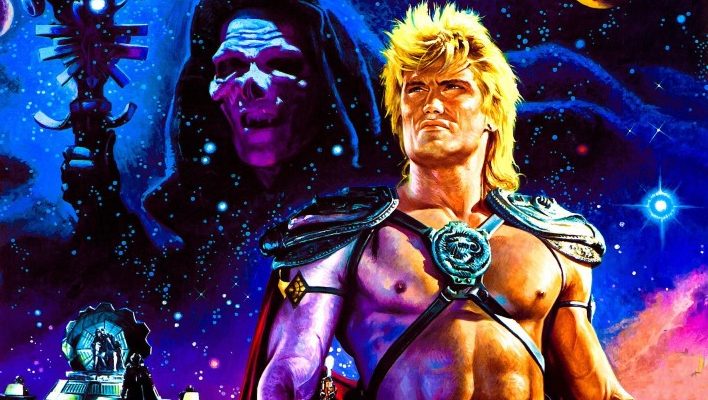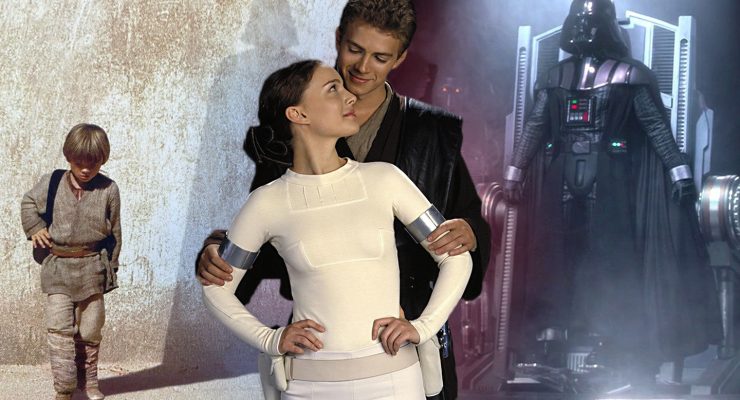Shaun Munro reviews Netflix’s new live-action Resident Evil series…
Despite being one of the most popular, iconic, and seemingly cinema-ready video game franchises there is, the track record of Resident Evil’s live-action adaptations to date is spotty-at-best, and that’s if we’re being really kind.
Beyond Paul W.S. Anderson’s entertainingly campy 2002 movie, the Resident Evil films have rarely risen above low-effort schlock, and even last year’s more source-faithful Resident Evil: Welcome to Raccoon City failed to make much of a dent.
Now it falls to TV to try and pick up the slack, then, with Netflix’s big-budget, eight-part take on the IP, developed by Supernatural showrunner Andrew Dabb. And yet, this new riff more often feels like a boilerplate sci-fi horror series cheekily bent to fit the franchise branding. All in all, it’s neither as bad as you feared nor as good as you hoped.
Resident Evil’s story unfolds over two far-flung timelines – 2022 and 2036. The 2022 narrative takes place three months before an apocalyptic event referred to as “The End,” focused on 14-year-old twin sisters Jade (Tamara Smart) and Billie (Siena Agudong), daughters of Dr. Albert Wesker (Lance Reddick), a high-flying employee of slyly malevolent pharma-corp Umbrella.
To continue his work, Wesker is relocated to New Raccoon City in South Africa – a city bought and designed by Umbrella. There, the company is developing an antidepressant called Joy, which as it turns out contains a derivative of the dreaded T-virus and, in higher doses, causes the virus to become activated. It doesn’t take a genius to figure out where things go from here.
Meanwhile in 2036, the world has gone to six shades of hell. The T-virus has transformed the majority of the global population into “zeroes” – that is, zombies – while the few survivors eke out a miserable existence in walled refugee cities. An adult Jade (Ella Balinska) is one such survivor, though her life is thrown into a tailspin once again when she’s chased down by Umbrella for reasons that become clear later.
It’s a franchise-adjacent setup that mostly forges its own path while tangentially drawing from scraps of the source material. The most obvious touchstones are Raccoon City, Umbrella, and Albert Wesker, yet anyone hoping for a more direct engagement with the series’ lore will surely be left disappointed. Throughout this first season Albert Wesker is the single video game character to appear, while the events of the games – which are 100% canon here, it seems – are only fleetingly whispered about.
And that will really be the series’ biggest hurdle for many; this could basically be any sci-fi horror series, so scarcely does it feel like it exists within the world of the Resident Evil we know. Tonally and aesthetically it takes a large leap from the B-movie-inspired tenor of the games, generally taking itself considerably more seriously – bar some truly woeful bursts of comic relief – while touting a gritty, overdone post-apocalyptic style in its future storyline.
As a result, those vague attempts to massage the story into the video game continuity come off as awkward and unconvincing, the narrative bending over backwards to slot itself into the canon. Even the wink-wink nods to the wider franchise feel largely pulled from the Resident Evil Easter Egg Starter Pack. All in all this series feels like it’d be far more comfortable in the 28 Days Later franchise, honestly.
Yet even as pure horror, the show is oddly tepid. Gore is shockingly infrequent for a series bearing the Resident Evil name, and it isn’t until the fourth episode that there’s much in the way of prolonged blood-letting.
Fans hoping to see some of their favourite creatures from the games may also be underwhelmed. Yes, there’s the fleeting presence of a licker, a giant spider, the sack-wearing chainsaw-wielding maniac from Resident Evil 4, and others that shan’t be spoiled, but like most references to the source these elements feel clunkily thrown in to curry favour with the hardcore set. Speaking of which, prepare to cringe yourself into the shadow realm when you hear how the infamous “master of unlocking” line is paraphrased here.
In the dramatic stakes, the constant cross-cutting between the two timelines is frustrating and makes it difficult for either side to gain much momentum. The 2022 portion is saddled with an excess of teen melodrama as Jade and Billie go about their business at school. Is anyone asking for this guff padding in a Resident Evil series? Combined with the fairly low-energy breadcrumb-following Umbrella plot and generic post-apocalyptic shenanigans in 2036, it adds up to a stew that left my interest flagging by the mid-way point.
The storytelling too often settles for formulaic genre froth motivated by asinine character decision-making. Of course Umbrella is a pharmaceutical corporation operating under the guise of benefitting the public health, and when the proverbial hits the fan they’re unwilling to halt their drug-peddling plans. Umbrella is embodied throughout by the coolly sinister CEO Evelyn Marcus (Paola Núñez), though as franchise villains go she’s not particularly interesting – despite a committed effort from Núñez.
Viewers able to take the series on its own terms and simply ride the wave may however find sporadic enjoyment. The world-building isn’t bad, and it’s kept watchable enough by its relatively robust production values, which wipe the floor with anything we’ve seen in the previous movies. The state-of-the-art Umbrella HQ is oppressively pristine, and the post-apocalyptic sets are convincingly grimy even if the colourless drabness becomes wearisome after a while. Unlike a lot of Netflix productions, the VFX also feel holistic and persuasive throughout, easily besting the recent film Welcome to Raccoon City, which flogged embarrassingly shoddy creature effects.
The visual package is complemented by a pulsing electronic score from Gregory Reveret that continues the franchise’s live-action tradition of ominous synths, though the soundtrack’s flagrant use of mopey pop hit covers during “emotional” moments quickly wears itself out.
To its further genuine credit, however, this is easily the best-acted live-action slice of Resident Evil to date. Rising star Ella Balinska gives a solidly steely performance as the grown-up Jade, while Tamara Smart and Siena Agudong share a convincing on-screen bond as the younger Jade and Billie.
Yet the MVP stakes ultimately go to the great Lance Reddick, an inspired choice for Albert Wesker on paper even if this version of the character bares only a cursory resemblance to his video game counterpart, reimagined here as a more composed, caring father-of-two. Reddick brings a gravitas and quiet menace to the fore, even if with a different name he could be basically anybody else. Ultimately this odd take on Wesker is going to heavily divide fans, but Reddick’s show-stealing performance is basically beyond reproach.
While arguably taking itself far more seriously than any Resident Evil adaptation probably should, at least there’s a confidence in the production that ensures this uneven new take is a rung above most of the movies. The plotting is often leaden and the action pedestrian, but the bar is so low for live-action Resident Evil that this mostly-watchable effort shakes out on the higher end.
Still, it’s tough to call it genuinely good, and mileage among fans will vary wildly. The show is perhaps best thought of as an eccentric adjunct to the video games; a messy reimagining that teases a second season with more explicit ties to the main franchise. But of course, it remains to be seen whether or not this half-bold, half-lazy take will resonate with both fans and general audiences.
Though slickly produced and solidly acted, Netflix’s Resident Evil feels too much like a generic sci-fi horror series cynically slapped with the Resident Evil branding and dusted with just enough fan service to keep the die-hards from fully tuning out.
Shaun Munro – Follow me on Twitter for more TV rambling.

















